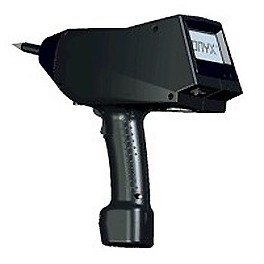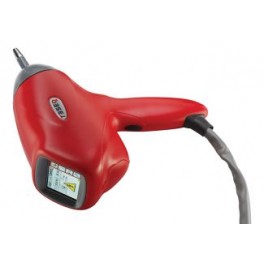No products
Product successfully added to your shopping cart
There are 0 items in your cart. There is 1 item in your cart.
Categories
Best sellers
-

Schaffner / Teseq NSG 435 ESD Simulator for IEC 61000-4-2
Programmable discharge voltage 200 V to 16.5 kV Stabilized charging...
$590.00 -

ESDGuns.com GRC Series Ground Cable w/ 470k Ohm Resistors for ESD Voltage Bleeding
Ideal for voltage bleeding to Ground Plane during Indirect ESD Immunity...
$199.00 -

Rent Keytek Minizap MZ-15/EC 15kV ESD Simulator Gun
Rentals Ship Immediately Purchase Options See: Used Keytek Minizap ESD...
$495.00 -

ESD Guns IF Insulating Foil for ESD Compliance Testing
Suitable for EN/IEC 61000-4-2 ESD immunity compliance testing...
$197.00 -

Teseq / Schaffner INA 405 Ni-Mh Battery Pack Refurbishment for NSG 435 ESD Gun
ESD Guns can refurbish your existing INA 405 battery pack. Expected...
$275.00 -

Haefely ONYX 16 kV ESD Generator Gun
Rental Package IncludesAir and Contact Discharge Tips Output...
$595.00 -

Teseq NSG 437 Electrostatic Discharge (ESD) Simulator Gun for GR-1089 & IEC 61000-4-2
Air- and contact-discharge to 30 kV Color touch panel control Advanced...
$895.00 -

3ctest EDS 20H Hand-held 20kV Electrostatic Discharge ESD Simulator
Air- and Contact- Discharge: 1000 Volts - 20kV ±5% Rise time: 0.6-1ns RC...
$476.00
FMC1278 CI 280: Electrostatic Discharge Specification for Electrical/Electronic Components and Subsystems per Ford Motor Company
This section will give you a brief overview of the electrostatic discharge (ESD) immunity requirements in the FMC1278 standard for compliance of electrical products for Ford Motor Company. The full standard is available for download - http://www.fordemc.com/docs/download/FMC1278.pdf.
Overview
FMV1278 CI 280 replaces EMC-CS-2009.1, each of which refers to ISO 10605 for the ESD testing portion. FMV1278 is applicable for all 12 and 124 volt DC electrical and electronic components/subsystems that are planned for use on 2020 Ford vehicle programs and beyond in addition to E/E component/subsystems whose commercial agreements are signed after July 1, 2015.
CI 280 Electrostatic Discharge is required in most components including all electronic modules (A, AS, AM, AX, AW), electric motors (EM), and other devices (D).
Differences from EMC-CS-2009.1
- With respect to reporting, the laboratory may not use of the terms pass or fail. They may only report Status I, II or III. FMC will make determination of pass/fail based during their review of the formal test report
- Parametric testing no longer required immediately after testing. However, parametric testing is recommended after testing on additional test samples.
- ISO 10506 (2001) replaced by ISO 10605 (2008). Affects ESD simulator verification.
- For handling tests, the DUT is placed on an dielectric support vs a dissipative mat. 200 mm ground still required.
- Figures updated to show that CAN wiring remains co-bundled with other wiring during powered ESD tests.
- ESD stress levels now extended to +/- 15 KV for CAN circuits in diagnostic connector
Automotive ESD Simulators:
Haefely ONYX 30 kV ESD Generator Gun | |
 | $995/month Rent Now |
|---|---|
Features:
| |
Teseq NSG 437 ESD Simulator Gun | |
 | $795/month Rent Now |
|---|---|
Features:
| |
FMV1278 CI 280 ESD Requirements: Handling (unpowered)
Minimum number of discharges at each polarity = 3
| Discharge Sequence | Type of Discharge | Test Voltage Level | Functional Performance Status - Class A/B/C |
| 1 | Contact 150 pF 2 kOhm | ±4kV | IV |
| 2 | Contact 150 pF 2 kOhm | ±6kV | |
| 3 | Air 150 pF 2 kOhm | ±8kV |
FMV1278 CI 280 ESD Requirements:Powered (all component surfaces)
Minimum number of discharges at each polarity = 3
| Discharge Sequence | Type of Discharge | Test Voltage Level | Functional Performance Status - Class A/B/C |
| 1 | Air 330 pF 2 kOhm | ±4kV | I |
| 2 | Contact 330 pF 2 kOhm | ±4kV | |
| 3 | Air 330 pF 2 kOhm | ±6kV | |
| 4 | Contact 330 pF 2 kOhm | ±6kV | II |
| 5 | Air 330 pF 2 kOhm | ±8kV | |
| 6 | Contact 330 pF 2 kOhm | ±8kV | |
| 7 | Air 330 pF 2 kOhm | ±15kV | |
| 8 | Air 150 pF 2 kOhm | ±25kV |
Functional Performance Status
- Functional Performance Status (I):
- The function operates without deviation (within specified tolerances defined by EMC test plan) during and after exposure to the disturbance.
- Functional Performance Status (II)
- The function deviated from normal design performance and is perceptible to the customer.
- The deviation does not impact safety or significantly impact customer satisfaction.
- After the disturbance is removed, recovery of normal function shall occur within a time equal or lower to that at startup (i.e. key-on). Alternatively, recovery shall be in line with a documented recovery strategy does not require the driver to perform any actions that are considered unsafe while the car is in motion.
- No effect on temporary or permanent type memory is allowed.
- The deviation in performance does not affect other related functions requiring Status I performance
- Functional Performance status (IV)
- The device shall not sustain damage, changes in I/O parametric values (resistance, capacitance, leakage current, etc.) or a permanent reduction in functionality.

